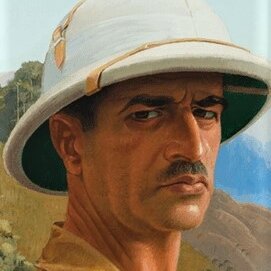Jean Despujols

Jean Despujols (19 March 1886, Salles en Gironde, France — 1965, Shreveport, USA) was a French — later naturalized American in 1945 — painter who extensively pictured Angkor and Indochina through his artwork.
A pupil of Paul Quinsac at the école des Beaux-Arts of Bordeaux who won the Prix de Rome in 1914, his associations with America began in 1924 – 1936 as a teacher of the students of the American Academy of Arts set in the Palace of Fontainebleau. There, he met his future wife, Milicent Martin, an American pianist.
In 1936, he won the Prix de l’Indochine, and was selected by the Grand Conseil Economique of French Indochina to undertake a tour of Vietnam, Cambodia and Laos despite his quite sulfurous reputation, his bold depiction of female nudity having outraged the French holier-than-thou.
Leaving Marseilles on November 27, 1936, he spent twenty months in Cambodia, Laos, and Vietnam, avoiding the modern, westernized cities of the regions he visited to immerse himself in the local cultures.
On August 25, 1938, according to his American biographer Dana Kress, Despujols set sail from Haiphong, Vietnam. After a brief stay in Hawaii, he rejoined Millicent Martin and their two children at her parents’ home in Minneapolis, Minnesota. Returning to France in July 1939 to fulfill his obligations to the Société des artistes coloniaux, Despujols was putting the finishing touches on the collection when the outbreak of the World War II forced the cancellation of the exhibition at the Pavillon de l’Orangerie. In haste, Despujols hid the paintings at Chaulet, the family estate, where they remained until the artist sent for them in 1948.
Jean Despujols is buried at Greenwood Cemetery, Shreveport, where the Meadows Museum of Art holds 338 of his artworks created in Southeast Asia.
Read a tribute to Jean Despujols by his grandson, Godefroy Hofer, on devata.org.
